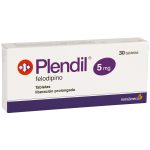Contents
How to Treat Foot Tendonitis
To treat foot tendonitis, halt physical activities and use the RICE method: Rest, Ice, Compression, Elevation.
Tendons are tissue cords that connect muscles to bones. When tendons become damaged and cause irritation or inflammation, it’s called tendonitis. This condition causes acute pain, swelling, and tenderness in the affected area, making movement difficult and painful.
Tendonitis often occurs due to repeated incorrect use of a specific body part. In the case of foot tendonitis, the Achilles tendon and other tendons that connect the foot to the lower leg bones can become injured.
Symptoms of Foot Tendonitis
Symptoms of foot tendonitis include pain, tenderness, and soreness around the ankle joint. It may also be difficult and painful to move the foot, and the affected joint may swell.
Causes of Foot Tendonitis
Causes of foot and ankle tendonitis include factors such as abnormal foot structure, medical conditions like rheumatoid arthritis or gout, trauma from injury or accident, and improper overuse of the foot and ankle.
Types of Foot Tendonitis
The most common types of foot tendonitis include:
Achilles tendonitis
Achilles tendonitis occurs when the large tendon connecting the back of the heel to the calf muscle becomes inflamed or torn.
Extensor tendonitis
Extensor tendonitis is inflammation of the tendons that run along the top of the foot. It is often caused by friction from shoes or inflammatory conditions like rheumatoid arthritis.
Flexor tendonitis
Flexor tendonitis causes deep pain in the back of the ankle, near the inside of the foot. It is common in dancers or those who frequently balance on their toes.
Peroneal tendinosis
Peroneal tendinosis involves pain and swelling in the tendons of the peroneal muscle, which wrap around the outside of the foot and ankle.
Posterior tibial tendonitis
Posterior tibial tendonitis is associated with flat feet. It causes pain and swelling in the tendon that wraps around the inside of the foot.
Diagnosis of Foot Tendonitis
Only a licensed healthcare professional can diagnose foot tendonitis. They will review your medical history and perform a physical evaluation. X-rays or an MRI scan may be ordered to assess the extent of the injury.
If foot tendonitis symptoms frequently occur, a specialist like a podiatrist may be recommended to identify the underlying cause.
Treatment for Foot Tendonitis
When foot pain occurs, following the R.I.C.E. method is recommended:
In other words, stop physical activities, apply ice, use compression, and elevate the foot above heart level. Rest is crucial for healing, which may take days, weeks, or months.
Your doctor may provide a walking boot to immobilize the foot and ankle if you need to move around. They may also suggest complete foot off-loading with crutches or a wheelchair.
To manage foot tendonitis pain, nonsteroidal anti-inflammatory drugs (NSAIDs) may be prescribed, and physical therapy can help strengthen muscles and reduce stress on the tendon.
Complications of Foot Tendonitis
Putting excessive pressure or strain on the healthy leg or foot while treating the affected foot can lead to injury in other parts of the body.
It is important to be cautious and not overload the healthy leg or foot during foot tendonitis treatment.
Medications used for pain or inflammation may have side effects, so it’s important to consult a healthcare provider about possible complications.
Recognizing Tendonitis
Tendonitis occurs when tendons become irritated or inflamed, causing acute pain, swelling, and tenderness in the affected joint.
Any tendon can develop tendonitis, although it is more likely to occur in joints that are highly active during physical activities, such as the elbow, heel, knee, shoulder, or wrist.
Types of Tendonitis
Common forms of tendonitis are often named after the sports that increase the risk, including:
Golfer’s elbow – inflammation of the tendons attaching forearm muscles to the inside bone at the elbow.
Jumper’s knee – inflammation in the patellar tendon that connects the kneecap to the shin bone.
Pitcher’s shoulder – extreme stress on the shoulder tendons caused by overhand throwing.
Swimmer’s shoulder – inflammation of shoulder ligaments due to continuous improper overhead arm motions during swimming.
Tennis elbow is another form of tendonitis that affects the tendons joining the forearm muscles on the outside of the elbow, causing pain and tenderness.
References:
- American College of Rheumatology: “Tendinitis (Bursitis).”
- American Family Physician: “Tendinopathies of the foot and ankle.”
- BioMed Research International: “Achilles Tendinopathy: Current Concepts about the Basic Science and Clinical Treatments.”
- EFORT Open Reviews: “Peroneal tendon disorders.”
- Journal of Athletic Training: “What is the Evidence for Rest, Ice, Compression, and Elevation Therapy in the Treatment of Ankle Sprains in Adults?”
- Journal of Family Medicine and Primary Care: “Posterior tibial tendon dysfunction: An overlooked cause of foot deformity.”
- Journal of Orthopaedic Research: “Mechanisms of tendon injury and repair.”
- OrthoInfo: “Achilles Tendinitis.”
- Pediatric Rheumatology: “Review for the Generalist: Evaluation of Pediatric Foot and Ankle Pain.”
- Radiology Case Reports: “Imaging Findings in Two Cases of Fluoroquinolone-Induced Achilles Tendinopathy.”
- American Academy of Orthopaedic Surgeons, OrthoInfo: “Golf Injury Prevention.”
- American Academy of Orthopaedic Surgeons, OrthoInfo: “Shoulder Injuries in the Throwing Athlete.”
- American Academy of Orthopaedic Surgeons, OrthoInfo: “Tennis Elbow (Lateral Epicondylitis).”
- American College of Rheumatology: “Tendinitis (Bursitis).”
- Harvard Health Publishing: “Tendonitis.”
- Johns Hopkins Medicine: “Patellar Tendonitis (Jumper’s Knee).”
- North American Journal of Sports Physical Therapy: “Prevention and Treatment of Swimmer’s Shoulder.”
- National Institute of Health, News in Health: “Protect Your Tendons: Preventing the Pain of Tendinitis.”


